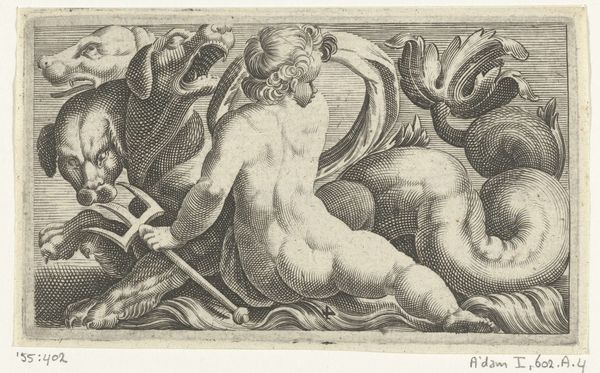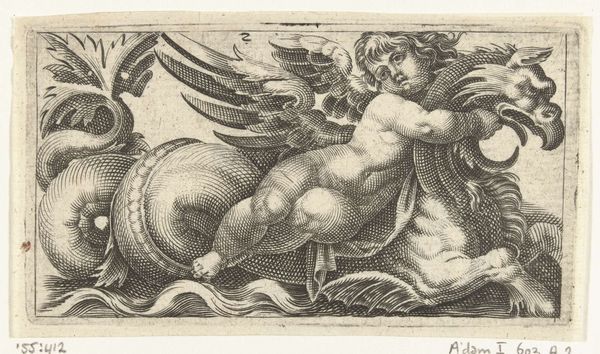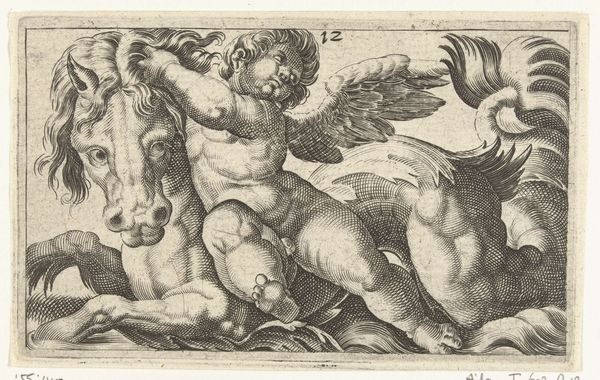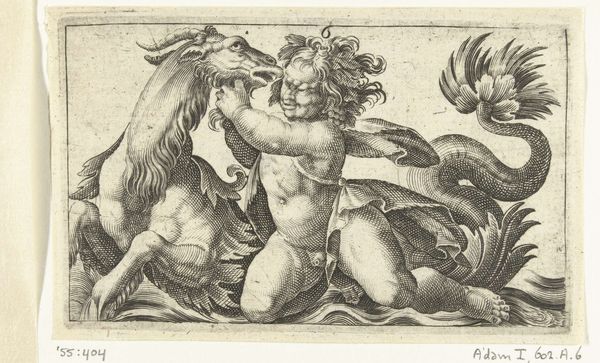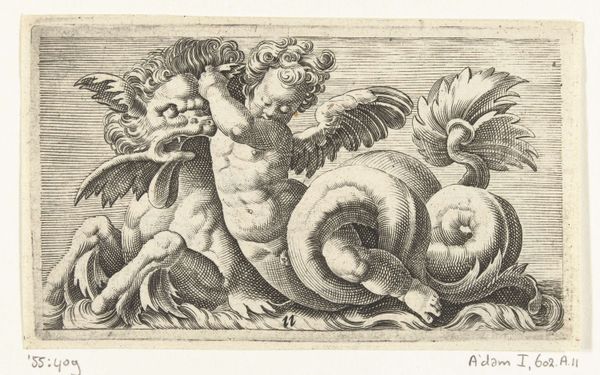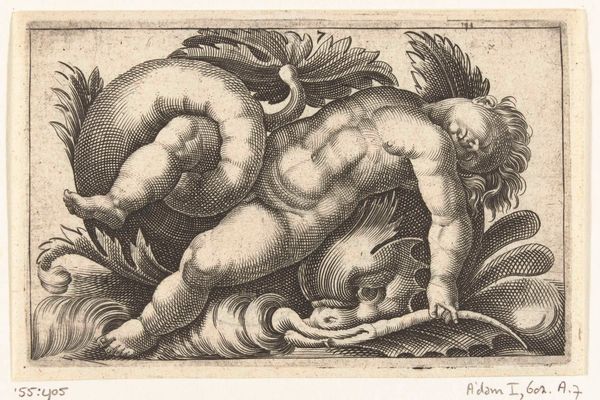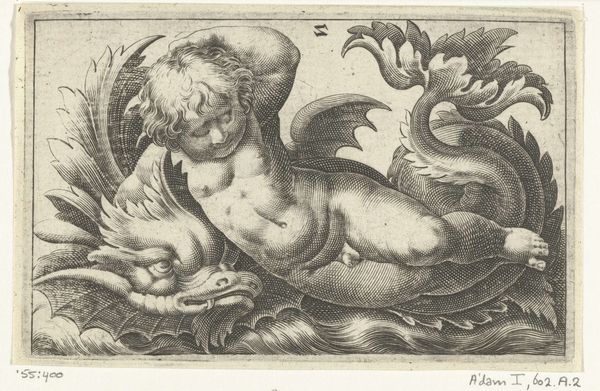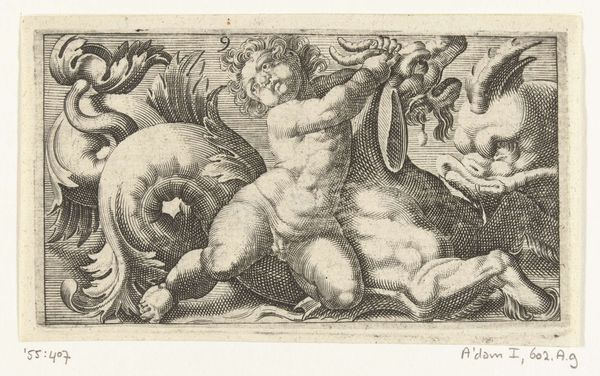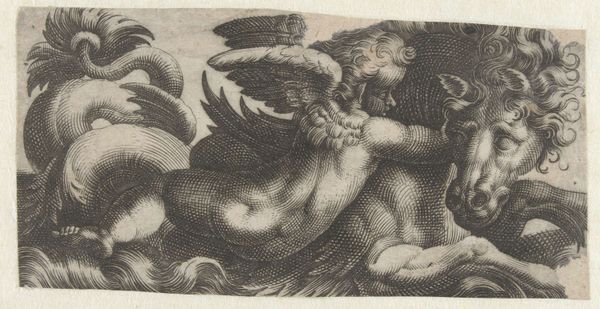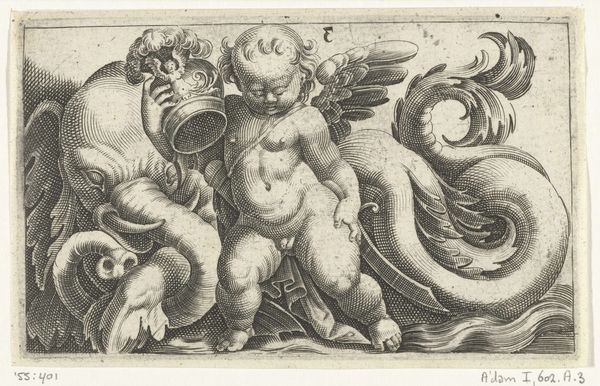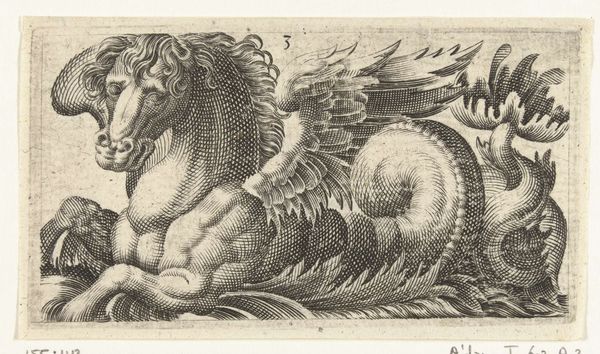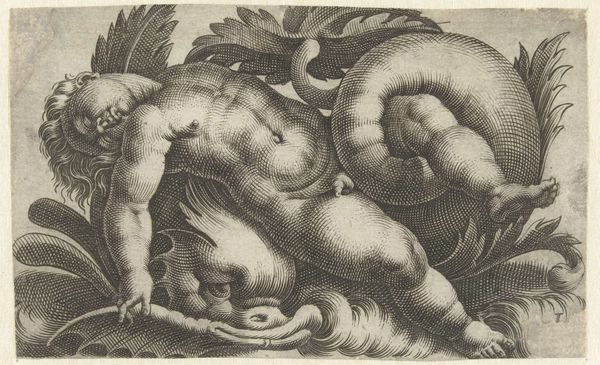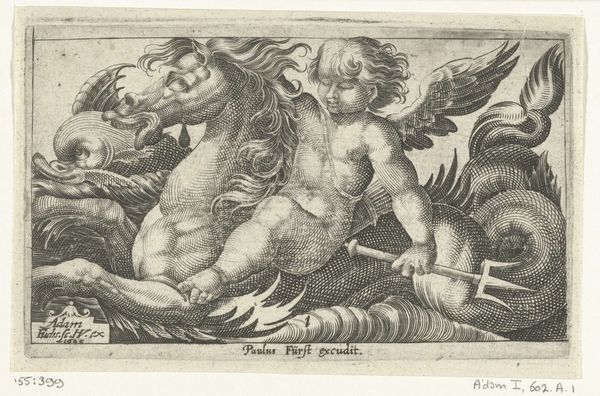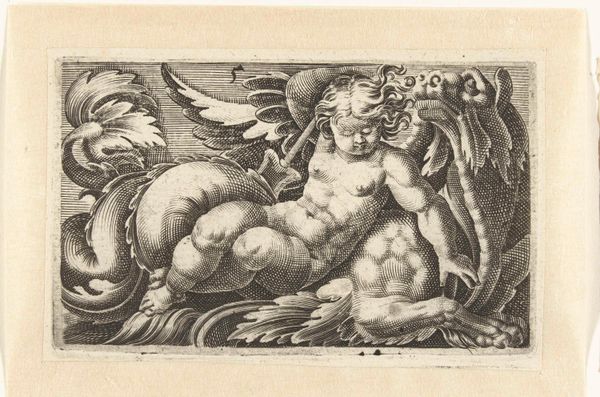
Kind op de rug gezien, hangend aan de manen van een zeepaard c. 1526 - 1606
0:00
0:00
print, engraving
# print
#
old engraving style
#
figuration
#
11_renaissance
#
portrait drawing
#
history-painting
#
engraving
Dimensions: height 70 mm, width 123 mm
Copyright: Rijks Museum: Open Domain
This is a 17th-century engraving by Adam Fuchs, depicting a child riding a fantastical seahorse. The image is made by incising lines into a metal plate, inking the surface, and then using a press to transfer the image onto paper. The image has a graphic quality dependent on the engraver’s skill. Look closely and you’ll see the lines vary in thickness and density to create shading and volume. This was labor-intensive work, requiring precision and control. The quality of the impression depended on the press operator, the paper, and the ink. Engravings like this were often produced in multiples, to be bound into books, or sold individually as prints. They played a crucial role in disseminating knowledge and imagery, functioning as a proto-photographic technology, and enabling a wider audience to appreciate the work of artists and designers. Considering the skill and labor involved in creating this image reminds us that even seemingly simple prints were once the result of complex processes. Recognizing this labor helps us to move beyond the purely aesthetic qualities of the work.
Comments
No comments
Be the first to comment and join the conversation on the ultimate creative platform.
